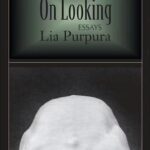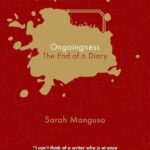Magic systems are something that I’ve always wanted to explore in writing. And a s a beginning fiction writer, I am aghast that something as intricate as magic is something that I have just assumed to be simple and direct. So I have just discovered that there’s an ongoing debate about magic systems and folk traditions. When it comes to enchanting fantasy worlds, do you favor calculated magical laws or lore-based folk magic? It’s a fun debate with arguments on both sides.
Personally, I geek out over intricate magic systems with clear parameters and limitations. Something so satisfying about understanding the ins and outs of how magic works within a narrative universe. But as a Filipino, I also have a soft spot for folk magic drawn from earthy traditions and spiritual beliefs. Both add such rich texture when woven into our stories authentically. Which is not weird. In a sociopsychological analysis of folktales, it reveals how our stories are shaped by the personality and social system of their bearers, reflecting the cultural context in their form and content (Fischer, 1963).
In this post, I’m going to dive deeper into magic systems vs Philippine folk magic. If you’re interested in these, consider the pros and cons of each approach, plus when a hybrid technique might serve your vision best.
So we find two intriguing elements: magic systems and folk magic in a lot of literary genres -particularly in realms of fantasy and historical fiction. Each has its own unique characteristics and nuances, and plays a pivotal role in narratives, enchanting readers with their distinct flavors. Let’s dive in!
Magic Systems: The Structure of Enchantment In the universe of fantasy literature, magic systems are like intricate puzzles, an added bonus to the plot of the story. These systems are defined by:
- Structured Rules: Think of a magic system as a well-oiled machine with gears and cogs, each part essential to its operation. It’s not just whimsical; it’s methodical, with clear limitations and boundaries. Which is probably why tech/magic is so enticing and addicting too. In Filipino fantasy narratives, magic systems are intricately designed, resembling the complex patterns of our traditional weaves. They are not arbitrary but operate within well-defined realms, akin to the intricate rules of our native games and rituals.
- Internal Consistency: The magic in these worlds follows its own logic, much like the laws of physics in our world. It’s this logical foundation that makes the fantastic seem plausible. These systems adhere to their own internal logic, much like the enduring folk tales passed down through generations. This consistency ensures that even in the most fantastical tales, there’s a sense of grounded reality, a connection to the familiar.
- Diverse Applications: From simple elemental forces to complex rites and innate powers, these systems demonstrate a wide array of magical manifestations. The magic systems in Filipino literature are as diverse as our archipelago. They range from the elemental magic reminiscent of our natural landscapes to elaborate ritualistic practices rooted in our indigenous cultures.
- Influence on Storytelling: In many fantasy tales, the magic system is not just a decorative element but a driving force that shapes the narrative, characters, and even the society within which they exist. In our stories, magic systems often shape our societal structures, conflicts, and character developments, reflecting the intertwined nature of our history, culture, and spirituality.
Consider the Harry Potter series, where magic is an academic subject, or the Mistborn series with its unique metallurgical magic. These aren’t just stories that feature magic; they’re stories that revolve around the intricacies of their magical systems. As for our epics, like the “Ibong Adarna” or “Biag ni Lam-ang,” they integrate mystical elements within their narrative framework, creating a unique blend of the real and the magical.
Folk Magic: The Tradition of Mysticism Contrasting with the structured magic systems of fantasy literature is folk magic, which is deeply rooted in cultural traditions and real-world practices. Its characteristics include:
- Cultural Roots: Folk magic is the legacy of ancient practices, a living tradition passed down through generations. Folk magic in our stories is a conduit to our past, echoing the practices and beliefs of our ancestors. It is a living, breathing element of our cultural identity.
- Regional Diversity: This type of magic varies widely, reflecting the beliefs, superstitions, and customs of different communities. It’s more about cultural practices than rigid rules. The Philippines, with its myriad of cultures and languages, offers a rich variety of folk magic practices. These vary from island to island, each with its unique flavor and significance.
- Intuitive Practice: Folk magic often lacks the formalized structure of fantasy magic systems. It’s more about the practitioner’s personal connection to their craft. Unlike the structured magic systems of fantasy worlds, our folk magic is intuitive, woven into the fabric of everyday life. It is less about grand spells and more about the subtle, personal connections with the spiritual realm.
- Everyday Integration: This form of magic is woven into the fabric of daily life, serving as an expression of cultural identity rather than an extraordinary power. In Philippine literature, folk magic is not an alien concept but a part of the community’s daily rhythm. It is seen in the rituals for harvest, in the amulets for protection, and in the ancient healing practices.
Examples include the shamanistic practices of indigenous cultures and the healing and protective spells of European cunning folk. These practices are not just magical rituals; they are integral to the cultural and spiritual life of the community. Folk magic in our narratives often draws from real practices, such as the babaylan traditions or the herbal knowledge of our healers. These elements ground our stories in authenticity, making them resonate with readers who see reflections of their own cultural background.
Crafting Your Magic System
Now, when building a fictional world, developing a unique magic system can be a crucial part of your world-building. This process is your chance to create something truly unique to your narrative world.
Consider the rules and limitations of your magic system. How is it accessed? What are its costs? I am a firm believer of magic having costs -unlimited magic is just -boring. How does it affect the societies and cultures in your world? The answers to these questions can deepen our narrative, adding layers of conflict and intrigue.
In Philippine literature, whether it’s through the structured magic systems of our fantasy tales or the rich, organic folk magic of our traditional stories, magic is more than just a plot device. It is our identity, a call to our rich heritage and boundless imagination. In every incantation, in every mythical creature, in every enchanted tale, we find pieces of our history, our beliefs, and our collective soul. Both forms add their unique essence to literature. They transport readers to realms where the ordinary meets the extraordinary, reflecting our fascination with the mystical and magical.






